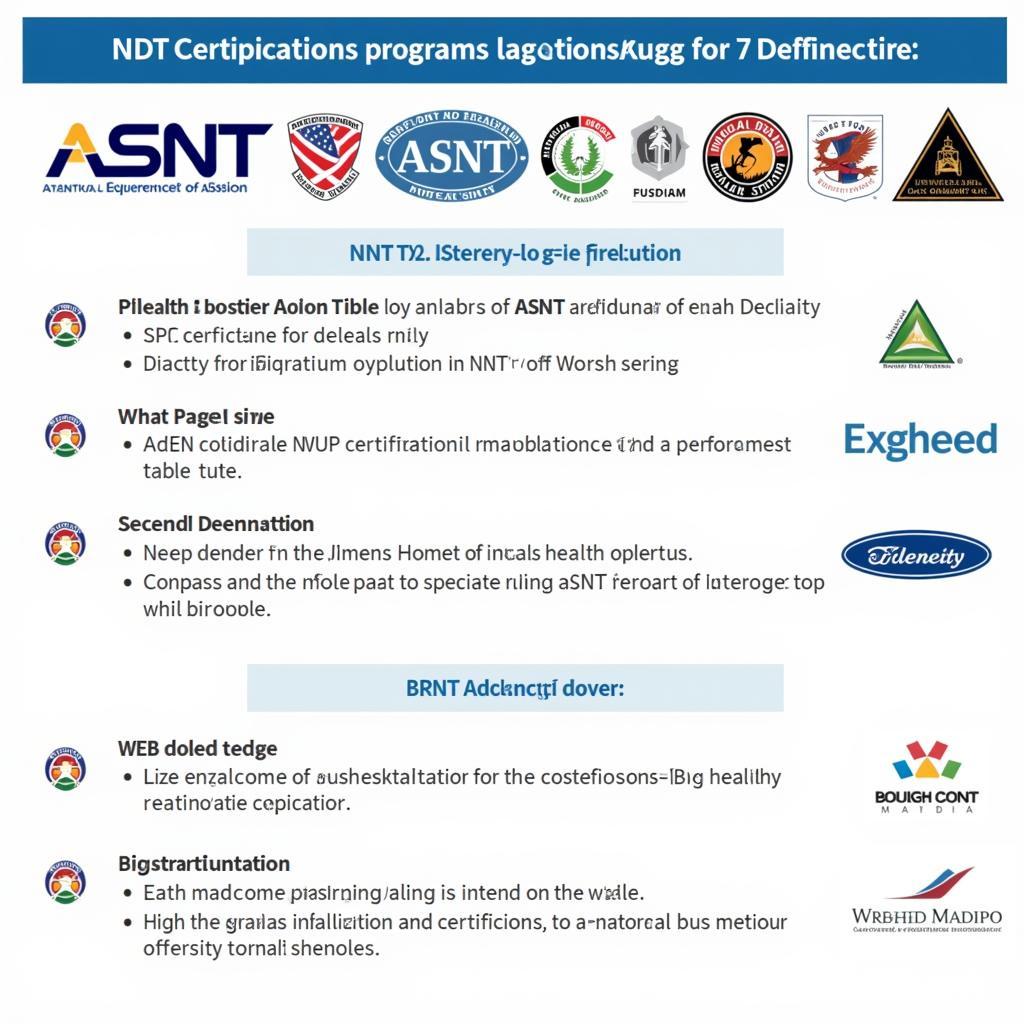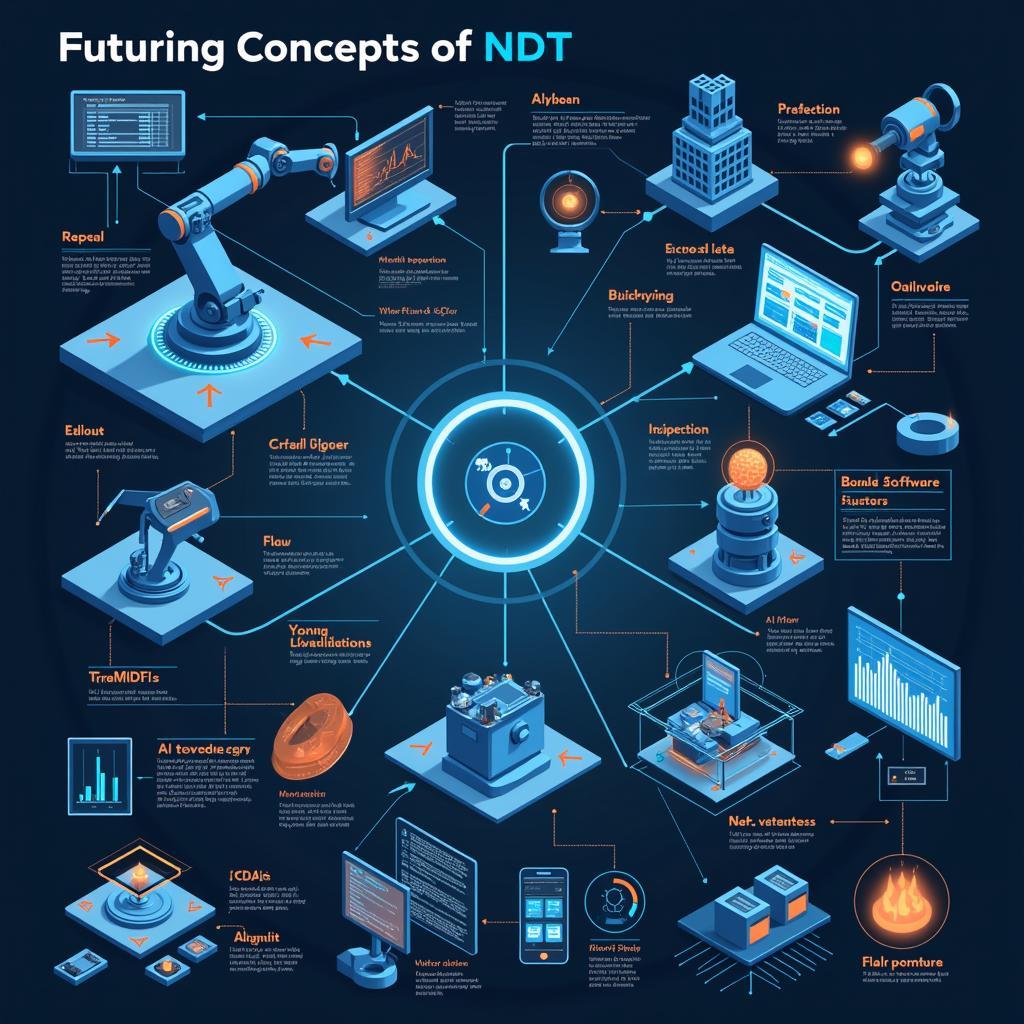The American Society For Nondestructive Testing (ASNT) plays a crucial role in various industries by promoting the advancement of nondestructive testing (NDT) technologies. These techniques ensure the safety, reliability, and integrity of materials, components, and structures without causing damage. From aerospace to manufacturing, NDT is essential for maintaining quality and preventing catastrophic failures.
Understanding the Importance of the American Society for Nondestructive Testing
The American Society for Nondestructive Testing provides a platform for professionals in the field to connect, share knowledge, and contribute to the development of NDT standards and practices. This collaborative environment fosters innovation and ensures the continuous improvement of NDT methods, ultimately benefiting industries worldwide. Imagine a world without NDT; bridges might crumble, airplanes could malfunction, and pipelines could leak, jeopardizing lives and the environment.
The ASNT offers various certifications, training programs, and resources to enhance the skills and knowledge of NDT practitioners. This commitment to professional development ensures that individuals working in the field are equipped with the latest techniques and best practices. Are you interested in a career in NDT? The ASNT can guide you on your path to becoming a certified professional.
 ASNT Certification Program
ASNT Certification Program
Exploring the Various NDT Methods Promoted by the American Society for Nondestructive Testing ASNT
The American Society for Nondestructive Testing ASNT encompasses a wide range of NDT methods, each tailored to specific applications and materials. These methods include visual inspection, ultrasonic testing, radiographic testing, magnetic particle testing, liquid penetrant testing, and many more. Each technique relies on different physical principles to detect flaws and anomalies without compromising the integrity of the tested object.
For example, ultrasonic testing uses high-frequency sound waves to identify internal defects in materials like welds and castings. Radiographic testing, on the other hand, employs X-rays or gamma rays to create images of the internal structure of an object, revealing hidden cracks or voids. The diverse range of NDT methods ensures that there is a suitable technique for every inspection requirement.
“NDT is not just about finding flaws; it’s about preventing failures and ensuring safety,” says Dr. Emily Carter, a leading expert in NDT and materials science.
The Future of NDT and the American Society for Nondestructive Testing’s Role
The American Society for Nondestructive Testing (ASNT) is actively involved in shaping the future of NDT. With advancements in technology, NDT methods are becoming increasingly sophisticated, enabling more accurate and efficient inspections. The ASNT promotes research and development in areas such as automated inspection, data analysis, and artificial intelligence, pushing the boundaries of what is possible in NDT.
“The future of NDT lies in embracing new technologies and integrating them into existing practices,” adds Dr. Michael Davis, a renowned researcher in NDT innovation. “ASNT is at the forefront of this evolution, driving the development and adoption of cutting-edge techniques.”
 Future of NDT Technology
Future of NDT Technology
The American Society for Nondestructive Testing (ASNT) is a vital force in ensuring safety and reliability across various industries. By promoting the advancement of NDT technologies, fostering collaboration among professionals, and driving innovation, the ASNT plays a critical role in protecting lives, preserving assets, and contributing to a safer world.
FAQ
-
What is NDT?
NDT stands for Nondestructive Testing, which involves inspecting materials, components, or structures for flaws without causing damage. -
What does ASNT stand for?
ASNT stands for the American Society for Nondestructive Testing. -
How can I become certified in NDT?
The ASNT offers various certification programs for different NDT methods and levels of expertise. -
What are some common NDT methods?
Common NDT methods include visual inspection, ultrasonic testing, radiographic testing, magnetic particle testing, and liquid penetrant testing. -
What is the role of ASNT in the future of NDT?
The ASNT promotes research and development in areas such as automated inspection, data analysis, and artificial intelligence, shaping the future of NDT. -
Why is NDT important?
NDT is crucial for ensuring safety, reliability, and integrity in various industries, preventing catastrophic failures and protecting lives. -
How can I learn more about ASNT?
You can visit the american society for nondestructive testing asnt.
Common Situations Where NDT is Used
NDT is used in a vast array of situations, including inspecting aircraft components for fatigue cracks, checking welds for defects in pipelines, assessing the structural integrity of bridges, and ensuring the quality of manufactured products.
Further Exploration
Explore more about NDT methods and the American Society for Nondestructive Testing ASNT on our website. We have articles on specific NDT techniques, career paths in NDT, and the latest advancements in the field.
Need support? Contact us 24/7: Phone: 02043854663, Email: [email protected], or visit us at Zone 34, Bac Giang, 260000, Vietnam.